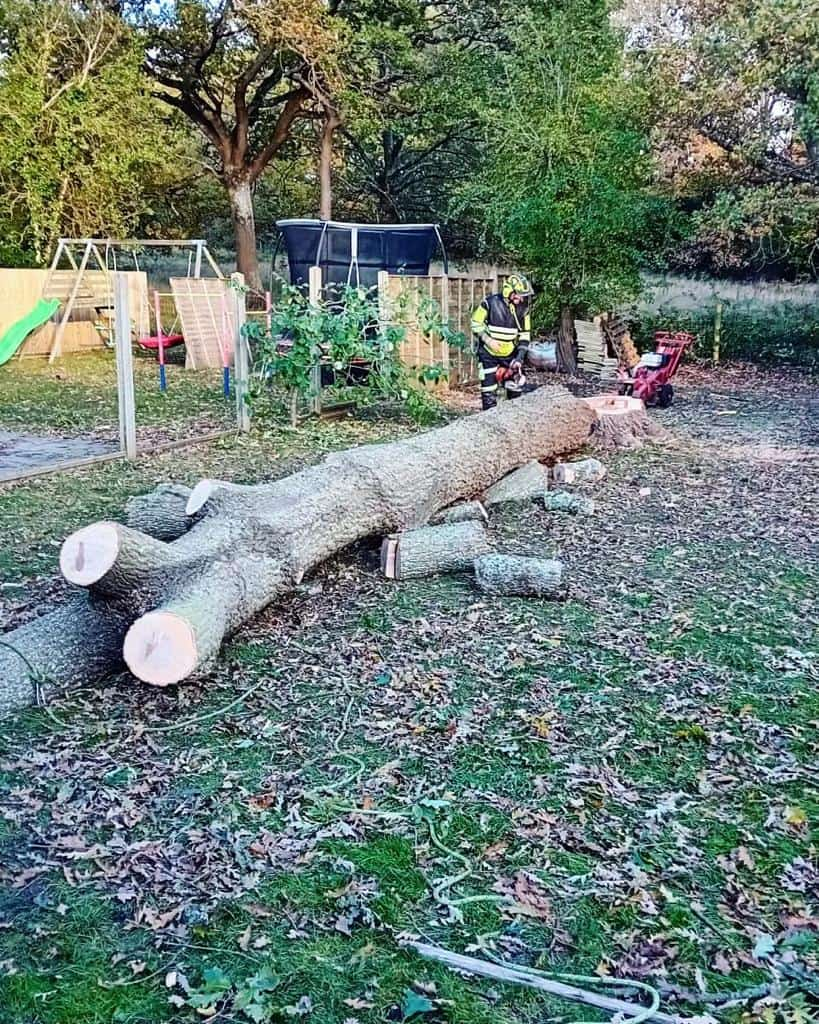A mature tree adds beauty, shade, and character to any property, but when its structural integrity is compromised, it can quickly become a safety concern. Recognising the warning signs early is essential for preventing accidents and protecting your surroundings. At Ware Tree Surgeons, we help property owners across Ware and Hertfordshire assess the health and stability of their trees to ensure they remain both safe and sustainable.
Understanding Tree Structural Stability
A structurally sound tree has a balanced canopy, strong root system, and healthy trunk capable of supporting its own weight and withstanding weather conditions. However, disease, storm damage, poor pruning, and root disruption can weaken a tree’s structure over time — making it more prone to splitting, leaning, or even collapsing.
Knowing what to look for can make all the difference between a manageable issue and a hazardous situation.
Key Signs a Tree May Be Structurally Unsafe
1. Visible Cracks or Splits in the Trunk
Deep cracks, open seams, or vertical splits in the trunk are serious indicators of structural weakness. These may appear after storms or due to internal decay. Once the trunk’s fibres are compromised, the tree can no longer distribute its weight evenly, putting it at risk of breaking apart.
2. Sudden Leaning or Tilting
A tree that begins to lean noticeably — especially if it wasn’t leaning before — should be inspected immediately. Leaning can result from root failure, soil erosion, or damage beneath the surface. Even a slight change in angle can signal that the tree is becoming unstable.
3. Exposed or Uplifted Roots
The root system is a tree’s anchor. If you notice that roots are lifting from the soil, cracked, or exposed after heavy rain, it can mean that the tree’s stability is compromised. This often occurs after strong winds or saturated ground conditions.
4. Fungal Growth or Mushrooms at the Base
The presence of fungi, mushrooms, or decay at the base of a tree typically points to internal rot. While the trunk may look intact from the outside, the inside could be hollow or severely weakened — significantly increasing the risk of collapse.
5. Dead or Falling Branches
Consistent loss of large branches, especially near the upper canopy, is a warning sign that the tree may no longer be healthy or able to support its weight. This often occurs when a tree is under stress or its internal structure has been weakened by decay or pests.
6. Hollow or Soft Wood
If tapping on the trunk produces a hollow sound or if sections feel soft to the touch, internal decay is likely. Although a hollow tree might still appear stable, its ability to withstand wind and weight loads is drastically reduced.
7. Uneven Canopy or Excessive Weight on One Side
An unbalanced canopy, where one side of the tree is heavier or fuller than the other, can lead to structural stress. Without proper pruning, the uneven distribution of weight can cause the tree to lean or snap under pressure.
How Professional Tree Assessment Helps
Determining whether a tree is structurally unsafe often requires professional expertise. Tree surgeons use visual assessments, sound testing, and even decay detection tools to identify hidden weaknesses.
At Ware Tree Surgeons, our team carries out detailed inspections that evaluate:
- Root integrity and soil condition
- Trunk stability and internal decay
- Branch weight distribution and canopy balance
- Signs of disease, pest damage, or rot
By understanding these factors, we can recommend the most suitable course of action — whether it’s pruning to reduce strain, bracing for added support, or safe removal where necessary.
Preventative Care Keeps Trees Safe
Structural issues often develop gradually, meaning routine maintenance is key. Regular pruning, soil aeration, and professional health assessments help trees remain strong and resilient. Preventative care not only improves safety but also extends the lifespan of your trees, allowing them to thrive without posing a hazard.
Conclusion
A tree that looks healthy on the surface can still hide serious structural problems beneath. By recognising the warning signs and scheduling regular assessments, property owners can prevent dangerous failures before they occur.
For expert tree inspections, maintenance, and advice across Ware and Hertfordshire, Ware Tree Surgeons provides professional, safety-focused services to keep your trees strong, stable, and secure all year round.
Call us on: 01992 932 299
Click here to find out more about Ware Tree Surgeons
Click here to complete our contact form and see how we can help with your tree care needs.

